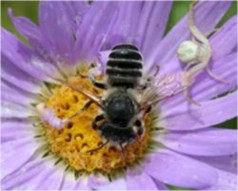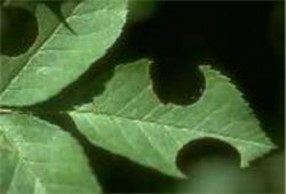attracted to fruit trees. They are treated with chemical formulations sprayed onto the tree during a fixed period from anticipated harvest time, which varies widely by product. Common insecticides use on fruit trees include: Carbaryl, Malathion, Metaldehyde, Azadirachtin, Permethrin and Pyrethrins. Horticultural or dormant oil spray made from paraffin and petroleum products is also used as a preventative treatment that effectively smothers the eggs and insects.
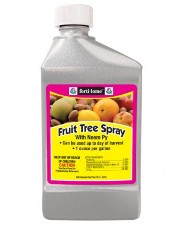
Figure 3.4. Pesticide
(Photo: www.fertilome.com/product)
Task 1: Read part 3.2 and match the statements with chemical sorts used for fruit trees.
Pesticides (P) Fungicides(F) Bacteriacides(B) Fertilizers(Fer)
1.Often mixed with fungicides.
2. Sprayed onto the tree during a fixed period from anticipated harvest time.
3.Fertilizers and soil amendments are common chemical treatments for fruit trees.
4.Used to control insect as beetles, moths, curculio, mites and aphids.
Có thể bạn quan tâm!
-
 Giáo trình Anh văn chuyên ngành Nghề Khoa học cây trồng - Cao đẳng - Trường Cao đẳng Cộng đồng Đồng Tháp - 2
Giáo trình Anh văn chuyên ngành Nghề Khoa học cây trồng - Cao đẳng - Trường Cao đẳng Cộng đồng Đồng Tháp - 2 -
 Giáo trình Anh văn chuyên ngành Nghề Khoa học cây trồng - Cao đẳng - Trường Cao đẳng Cộng đồng Đồng Tháp - 3
Giáo trình Anh văn chuyên ngành Nghề Khoa học cây trồng - Cao đẳng - Trường Cao đẳng Cộng đồng Đồng Tháp - 3 -
 Giáo trình Anh văn chuyên ngành Nghề Khoa học cây trồng - Cao đẳng - Trường Cao đẳng Cộng đồng Đồng Tháp - 4
Giáo trình Anh văn chuyên ngành Nghề Khoa học cây trồng - Cao đẳng - Trường Cao đẳng Cộng đồng Đồng Tháp - 4 -
 Giáo trình Anh văn chuyên ngành Nghề Khoa học cây trồng - Cao đẳng - Trường Cao đẳng Cộng đồng Đồng Tháp - 6
Giáo trình Anh văn chuyên ngành Nghề Khoa học cây trồng - Cao đẳng - Trường Cao đẳng Cộng đồng Đồng Tháp - 6 -
 Transplanting Method Helping Increase Paddy Yields
Transplanting Method Helping Increase Paddy Yields -
 Giáo trình Anh văn chuyên ngành Nghề Khoa học cây trồng - Cao đẳng - Trường Cao đẳng Cộng đồng Đồng Tháp - 8
Giáo trình Anh văn chuyên ngành Nghề Khoa học cây trồng - Cao đẳng - Trường Cao đẳng Cộng đồng Đồng Tháp - 8
Xem toàn bộ 91 trang tài liệu này.
5.Commonly treated by spraying the trunk, branches and foliage.
6.Used as a preventative treatment that effectively smothers the eggs and insects.
7.Keeping the tree growing vigorously, flowering and developing fruit.
8.Used for treating molds, botryosphaeria, apple scab, bitter rot, brown rot, and black knot.
9.Containing synthetic elements of nitrogen, phosphorous and potassium.
10.Used to control fungi plants that colonize on a fruit tree.
11.Provided when fruit trees fail to grow or fruit easily.
12.Containing copper, lime sulfur or sulfur as the active ingredient to kill and contain the bacteria cells.
Task 2: Refer part 3.1 and 3.2, then translate into Vietnamese.
1. Fruit trees can benefit from several kinds of chemicals applied to the foliage, branches and surrounding soil.
……………………………………………………………………………….
……………………………………………………………………………….
2. When fruit trees fail to grow or fruit easily, feeding a balanced complete fertilizer in the early spring before flowering is warranted.
……………………………………………………………………………….
……………………………………………………………………………….
3. Bacteriacides for fruit trees often use copper, lime sulfur or sulfur as the active ingredient to kill and contain the bacteria cells. Bacteria treatments are often mixed with fungicides to prevent or treat both issues in a single application.
……………………………………………………………………………….
……………………………………………………………………………….
……………………………………………………………………………….
……………………………………………………………………………….
4. Beetles, moths, curculio, mites and aphids are among the many pests attracted to fruit trees. They are treated with chemical formulations sprayed onto the tree during a fixed period from anticipated harvest time, which varies widely by product.
……………………………………………………………………………….
……………………………………………………………………………….
3. Environmental effects of herbicide use
Some substantial benefits can be gained through the use of herbicides to manage unwanted vegetation. Compared with alternative means of weed control, such as mechanically weeding by hand or machine, herbicides are less expensive, often safer (especially in forestry), faster, and sometimes more selective.
However, if herbicides are not used properly, damage may be caused to crop plants, especially if too large a dose is used, or if spraying occurs during a time when the crop species is sensitive to the herbicide. Unintended but economically important damage to crop plants is sometimes a consequence of the inappropriate use of herbicides.
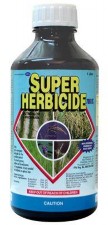
Figure 3.5: Herbicide
(Photo: www.ivainc.com/products2)
In addition, some important environmental effects are associated with the use of herbicides. These include unintended damage occurring both on the sprayed site, and offsite. For example, by changing the vegetation of treated sites, herbicide use also changes the habitat of animals such as mammals and birds. This is especially true of herbicides use in forestry, because biodiverse, semi-natural habitats are involved. This is an indirect effect of herbicide use, because it does not involve toxicity caused to the animal by the herbicide. Nevertheless, the effects can be severe for some species.
Most herbicides are specifically plant poisons, and are not very toxic to animals. (There are exceptions, however, as is the case with the herbicide
paraquat.) However, by inducing large changes in vegetation, herbicides can indirectly affect populations of birds, mammals, insects, and other animals through changes in the nature of their habitat.
Similarly, the herbicides most commonly used in forestry are not particularly toxic to animals. Their use does however, cause large changes in the habitat available on clear-cuts and plantations, and these might be expected to diminish the suitability of sprayed sites for the many species of song birds, mammals, and other animals that utilize those habitats.
Exercises:
Task 1: Read part 3.3 and decide whether the statements are True (T) or False (F).
1.Herbicides are not toxic to animals.
2.If herbicides are used inappropriately, economically important damage to crop plants is sometimes obviously.
3.Herbicides can cause damage to crop plants if they are not used properly. 4.Herbicides are more expensive, often safer (especially in forestry), faster than weeding by hand or machine.
5.Using herbicides in forestry also changes the habitat of animals such as mammals and birds.
6.Herbicides can indirectly influence populations of birds, mammals, insects, and other animals.
Task 2: Sort the words in the box to the same topics. There is one word belonging to two topics, but some are not at all.
forestry
herbicide
catfish
bird creeper house doctor
shrub
weed pesticide
copper
gas station
dolphin
bonsai
house-fly fertilizer
bactericide
mammal
straw
Animal
…………….
…………….
…………….
…………….
……………..
Botany
…………….
…………….
…………….
…………….
…………….
Chemical
…………….
…………….
…………….
……………..
……………..
UNIT 4 ROSES MH35-04
Introduction
Roses, the “Queen of the Flowers,” have been enjoyed for thousands of years. Their cultivation dates back to at least Greek and Roman times. Many varieties are descendants from ancient garden plants in China, Persia, and Turkey. While the idea of a dozen long-stemmed roses may be the first image that comes to mind for many, the world of roses is varied and diverse. Wild roses grow in all corners of the world, in many habitats ranging from forests, along coastlines and rivers, to high mountain elevations.
Objectives:
By the end of the lesson, learners are able to:
+ Scan for details to complete the information rapidly and give exact decisions to parts of statements.
+ Get main content of the lesson through using meanings of new words in order to translate into Vietnamese.
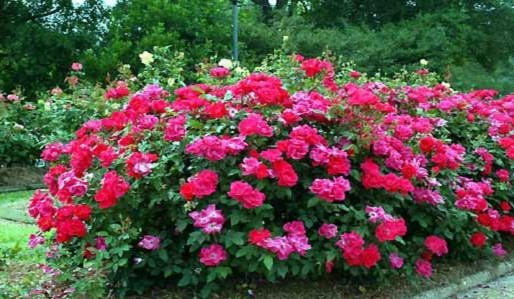
1. Insect pests for roses
Roses are susceptible to a number of disease and insect pests. Roses may survive without a basic pest control program, but they may not be very attractive. A pest
control program starts with proper site selection, good soil preparation, good drainage, proper spacing, cultivar selection, and plant maintenance. These all foster healthy roses that are better able to withstand the pressure of disease and insects.
1.1. Aphids
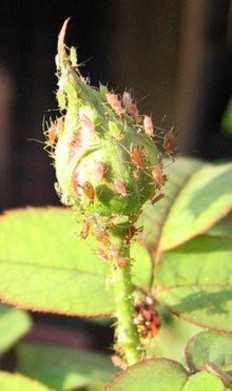
Figure 4.1. Rose plant attacked by aphids
(Photo: urbanext.illinois.edu/roses/disease.cfm)
Aphids are very common pests. Aphids are soft-bodied insects that can be red, green, yellow, or black. They feed on very young succulent shoots, causing distortion. Aphids are often kept in check by natural predators. Alternative control measures include the use of insecticidal soaps, strong streams of water to knock them off the plant, or insecticides.
1.2. Japanese Beetles
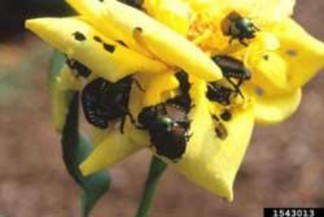
Figure 4.2. Rose plant attacked by Japanese beetles
(Photo: Internet source)
These hard-shelled, metallic-green, black, and gold insects can cause extensive damage to roses just by their sheer numbers and voracious appetite. They prefer flowers and flower buds but will also attack foliage. Japanese beetles are difficult to control because they are strong fliers and constantly reinvade the area. This means that reapplication needs to be done on a regular basis to protect the foliage and flowers. Beware of Japanese beetle traps. Traps are almost too effective and will draw a great number of beetles into an area, making the problem worse. If they are used, they should be placed in areas away from the rose garden. Hand picking is also a suggested control for small numbers of beetles.
1.3. Leaf Cutter Bees
Figure 4.3. Flower and leaves attacked by leaf cutter bees.
